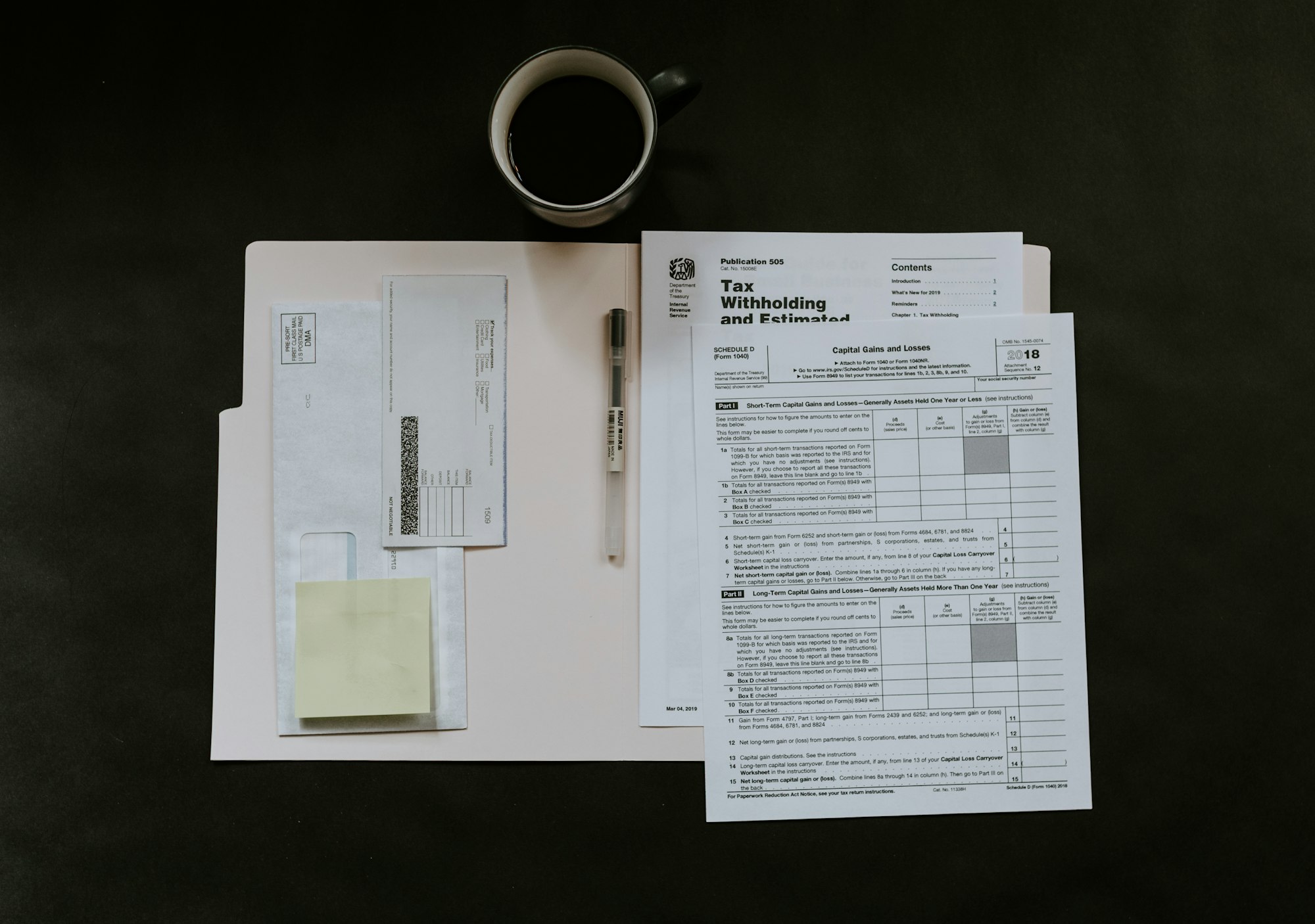Think of client retention like taking care of a garden. You can't just plant seeds and leave them alone; you have to regularly water, feed, and care for your plants. The same goes for your customer relationships. Every interaction and experience influences your clients' decision to remain loyal to your brand.
The numbers paint a clear picture:
- It costs five times more to get a new customer than to keep an existing one.
- Loyal customers spend 67% more than new customers.
- A 5% increase in retention rates can lead to a profit boost of 25-95%.
Your current clients hold untapped potential for growth. They already know, trust, and value your brand. By implementing strategic retention efforts, you can turn these relationships into powerful sources of income and brand support.
This comprehensive guide reveals effective client retention strategies designed specifically for the 2025 market. You'll find practical ways to strengthen customer relationships, increase loyalty, and achieve sustainable business growth through retention.
Understanding Client Retention
Client retention rate measures the percentage of customers who continue doing business with your company over a specific period. This metric serves as a vital indicator of your business's ability to maintain long-term relationships and build customer loyalty.
Calculating Your Retention Rate
Your retention rate can be determined using this formula:
Retention Rate = ((E-N)/S) x 100
Where:
- E = Number of customers at the end of the period
- N = Number of new customers acquired during the period
- S = Number of customers at the start of the period
A healthy retention rate varies by industry, but businesses should aim for:
- B2B companies: 80% or higher
- SaaS companies: 85% or higher
- Retail businesses: 65% or higher
Customer Lifetime Value (LTV)
LTV represents the total revenue you can expect from a customer throughout your entire business relationship. Understanding LTV helps you:
- Identify your most valuable customer segments
- Optimize marketing spend and acquisition costs
- Make data-driven decisions about customer service investments
- Set appropriate customer acquisition budgets
Calculating Customer Lifetime Value
Follow these steps to determine your customer LTV:
- Calculate Average Purchase Value
- Total Revenue / Number of Orders
- Determine Purchase Frequency Rate
- Number of Orders / Number of Unique Customers
- Establish Customer Value
- Average Purchase Value × Purchase Frequency Rate
- Measure Average Customer Lifespan
- Sum of Customer Lifespans / Number of Customers
- Calculate Final LTV
- Customer Value × Average Customer Lifespan
Impact on Business Success
High LTV directly correlates with sustainable business growth. Companies with strong customer lifetime values typically experience:
- Reduced acquisition costs
- Higher profit margins
- Increased market share
- Stronger brand advocacy
- More predictable revenue streams
By tracking these metrics consistently, you can identify trends, adjust strategies, and allocate resources effectively to maximize customer retention. Regular analysis of both retention rates and LTV provides valuable insights for developing targeted retention initiatives that resonate with your specific customer base.
The Benefits of Prioritizing Client Retention
Client retention is a powerful driver of business growth, delivering substantial financial advantages that directly impact your bottom line. Let's examine the key benefits of maintaining strong client relationships:
1. Cost-Effective Business Growth
Research shows acquiring new customers costs 5-25 times more than retaining existing ones. This stark difference stems from:
- Reduced marketing spend
- Lower onboarding costs
- Minimal relationship-building investment
- Decreased administrative overhead
2. Higher Conversion Rates Among Loyal Customers
Existing clients demonstrate significantly higher conversion rates compared to new prospects:
- 60-70% success rate when selling to existing customers
- 5-20% success rate when selling to new prospects
- Faster sales cycles with repeat buyers
- Increased average order value
Your loyal customers already trust your brand and understand your value proposition, making them more receptive to new offerings and upgrades.
3. Predictable Revenue Streams
Retained clients create stable, foreseeable income through:
- Recurring subscription payments
- Regular purchase patterns
- Consistent upsell opportunities
- Reliable contract renewals
This predictability enables better:
- Cash flow management
- Resource allocation
- Growth planning
- Investment decisions
4. The Compound Effect of Client Retention
A mere 5% increase in customer retention can boost profits by 25-95%. This multiplier effect occurs through:
- Increased purchase frequency
- Higher spending per transaction
- Reduced operational costs
- Word-of-mouth referrals
5. Data-Backed Revenue Impact
Retained customers demonstrate superior revenue generation:
- Spend 33% more per order
- Buy 90% more frequently
- Generate 3x the annual value
- Provide 50% higher profit margins
These statistics highlight why prioritizing client retention represents a strategic imperative for sustainable business growth. A well-executed retention strategy creates a foundation for predictable revenue growth while minimizing acquisition costs.

1. Personalizing Engagement at Every Touchpoint
Personalization is crucial for keeping clients happy and loyal in 2025. When you provide tailored experiences at every interaction, it directly affects how satisfied and committed your clients are.
Key Elements of Personalized Engagement:
- Data-Driven Insights: Use AI-powered analytics to understand client preferences, behaviors, and past interactions
- Dynamic Content Adaptation: Adjust messaging and recommendations based on client segments and individual profiles
- Real-Time Response Systems: Implement chatbots and automated tools that offer personalized assistance around the clock
- Custom Communication Channels: Give clients the option to choose how and when they want to be contacted
Creating Meaningful Client Interactions
Your personalization strategy should go beyond just using someone's name. Here are some ways to make your interactions more personal:
- Purchase History AnalysisKeep track of what your clients have bought before
- Find products that go well with their previous purchases
- Anticipate what they might need in the future
- Suggest items at the right time based on their buying cycle
- Behavioral TrackingPay attention to how clients navigate through your website
- Measure how long they spend looking at specific products
- Take note of any items they leave behind in their shopping cart
- Analyze the words or phrases they use when searching for something
- Preference ManagementAllow clients to customize their own dashboards where they can see relevant information at a glance
- Send them notifications or alerts about updates or offers that match their interests
- Give them the ability to personalize certain features according to their liking
- Support individual goals by providing resources or tools that help them achieve what they want
Technology Integration for Enhanced Personalization
Modern tools enable sophisticated personalization:
"73% of clients expect companies to understand their unique needs and expectations" - 2024 Customer Experience Report
- AI-Powered CRM SystemsAutomate personalized follow-ups after a purchase or interaction
- Generate smart product suggestions based on previous buying behavior
- Create custom engagement scores that measure how likely a client is to respond positively
- Trigger targeted communications such as emails or messages depending on specific actions taken by the client
- Machine Learning AlgorithmsPredict client needs by analyzing patterns in their behavior over time
- Identify churn risks by looking for signs that a client may be unhappy or disengaged
- Optimize communication timing by sending messages at times when clients are most likely to open them
- Personalize pricing strategies by offering discounts or promotions tailored specifically for each client
Measuring Personalization Impact
Track these metrics to gauge effectiveness:
- Client engagement rates (how often clients interact with your messages or content)
- Response times to personalized messages (how quickly clients reply or take action after receiving a tailored communication)
- Individual client satisfaction scores (feedback from specific clients about their experience with your brand)
- Personalization-driven revenue (income generated directly as a result of personalized offers or recommendations)
- Custom experience adoption rates (percentage of clients who actively use customized features)
Your personalization efforts should create seamless experiences across all touchpoints - from initial contact through ongoing support. This approach builds stronger connections with your clients and increases their likelihood to stay
3. Offering Flexible Subscription Options and Exclusive Discounts to Drive Repeat Business
Subscription models transform one-time buyers into loyal, long-term clients. The key lies in creating flexible options that align with your customers' diverse needs and purchasing patterns.
Tiered Subscription Models
- Basic tier: Entry-level access with core features
- Professional tier: Enhanced features and priority support
- Enterprise tier: Full suite of services with dedicated account management
Strategic Discount Implementation
- Early renewal rewards (10-15% off for renewing before expiration)
- Volume-based pricing breaks
- Annual payment incentives (save 20% compared to monthly billing)
Your subscription strategy needs built-in flexibility to accommodate changing client needs. Consider offering:
- Pause capabilities for temporary service interruption
- Easy plan switching without penalties
- Custom package creation for specific client requirements
Exclusive Benefits for Subscribers
- Priority access to new features
- Members-only content and resources
- Special event invitations
- Dedicated support channels
Data-Driven Discount Strategies
- Analyze purchase patterns to time promotional offers
- Track usage metrics to suggest appropriate plan upgrades
- Monitor churn indicators to deploy retention offers
Successful subscription programs integrate seamlessly with your existing systems. Implement automated billing, clear usage tracking, and transparent pricing to build trust and reduce friction in the renewal process.
Client-Specific Promotions
- Anniversary rewards
- Usage milestone bonuses
- Referral program multipliers
- Industry-specific packages
Remember to regularly assess the performance of your subscription tiers and adjust pricing, features, or benefits based on client feedback and usage data. This dynamic approach ensures your offering remains competitive and valuable to your client base.
4. Building Loyalty Through Rewards Programs That Resonate with Your Audience
A well-designed loyalty program creates emotional connections with your clients while driving measurable business results. The key lies in crafting rewards that align with your audience's values and behaviors.
Effective Loyalty Program Structures:
- Tiered Systems - Create exclusive levels based on spending or engagement, offering increasingly valuable benefits as clients progress
- Points-Based Programs - Award points for purchases, referrals, and brand interactions that can be redeemed for meaningful rewards
- Experience-Based Rewards - Provide access to unique events, early product releases, or VIP customer service
- Gamification Elements - Incorporate challenges, badges, and achievement systems to make engagement fun and interactive
Personalizing Your Rewards Program:
- Analyze customer data to identify preferred products and services
- Segment rewards based on client behaviors and preferences
- Offer choice in redemption options to accommodate diverse interests
- Create special occasions rewards (birthdays, anniversaries, milestones)
Building Community Through Rewards:
- Host exclusive member events
- Create members-only social media groups
- Develop collaborative challenges that encourage interaction
- Share success stories and spotlight loyal customers
Measuring Program Success:
- Track redemption rates
- Monitor program participation levels
- Measure changes in purchase frequency
- Analyze customer satisfaction scores
Your rewards program should evolve with your clients' needs. Regular feedback collection helps refine offerings and maintain program relevance. Advanced analytics tools can identify patterns in redemption behavior, enabling you to optimize reward structures for maximum impact.
Consider implementing surprise rewards to delight customers unexpectedly. These unexpected gestures create memorable experiences and strengthen emotional connections with your brand. Digital wallets and mobile apps make reward tracking and redemption convenient for busy clients.
Remember to communicate program benefits clearly and make participation straightforward. Complex rules or difficult redemption processes can discourage engagement and diminish the program's effectiveness.

5. Leveraging Referral Incentives as a Cost-Effective Acquisition Channel That Also Boosts Retention Rates
Referral programs turn happy clients into brand advocates, creating a sustainable growth engine for your business. A well-designed referral system rewards both the referrer and the new customer, establishing a powerful cycle of mutual benefit.
Effective Referral Program Components:
- Double-Sided Rewards: Offer incentives to both parties - the referrer and the referred customer
- Choice of Rewards: Mix monetary and non-monetary benefits
- Clear Terms: Simple, transparent conditions for earning rewards
- Easy Sharing: One-click referral links and social media integration
- Real-Time Tracking: Dashboard showing referral status and earned rewards
Monetary Reward Options:
- Cash bonuses
- Account credits
- Service upgrades
- Exclusive discount codes
- Free subscription months
Non-Monetary Incentives:
- Priority support access
- Early access to new features
- VIP event invitations
- Custom service packages
- Recognition in company newsletters
Your referral program success depends on timing the ask. Identify key moments when clients experience peak satisfaction - after successful project completion, positive support interaction, or achievement of significant results.
Best Practices for Referral Success:
- Personalize referral requests based on client history
- Automate follow-ups without being intrusive
- Create shareable success stories
- Celebrate successful referrals publicly
- Make reward redemption straightforward
A strategic referral program builds trust through social proof. When clients recommend your services to their network, they put their reputation on the line - this creates a stronger bond between your brand and the referring customer, increasing their likelihood to stay longer.
Implement gamification elements to maintain engagement. Progress bars, achievement badges, and referral milestones keep participants active and invested in your program's success. This approach transforms the referral process from a one-time transaction into an ongoing engagement opportunity.
6. Building Community Engagement Through Online Forums and User-Generated Content Campaigns
Building a thriving online community transforms passive customers into active brand advocates. Your client base becomes a powerful network of engaged users who share experiences, provide mutual support, and create valuable content.
Key Community Building Strategies:
- Create dedicated spaces on platforms like Discord or Slack for real-time client interactions
- Host weekly "Ask Me Anything" sessions with industry experts
- Develop topic-specific discussion boards for product usage and best practices
- Showcase client success stories through video testimonials and case studies
User-generated content campaigns amplify authentic voices while reducing your content creation costs. Encourage clients to share their experiences through:
- Photo contests featuring your products in action
- Client success story submissions
- Tips and tricks videos from power users
- Creative challenges related to your brand
Community Management Best Practices:
- Assign dedicated moderators to maintain engagement
- Recognize active contributors with special badges or status
- Feature outstanding community members in your newsletter
- Address concerns promptly to maintain trust
- Create exclusive content for community members
A strong community provides valuable insights into client needs and pain points. Monitor discussions to:
- Identify common challenges
- Spot emerging trends
- Gather product improvement ideas
- Understand client preferences
Engagement Metrics to Track:
- Daily active users
- Response rates to community posts
- User-generated content submission rates
- Time spent in community spaces
- Cross-pollination between different community channels
Successful communities foster peer-to-peer learning and support. Your clients become product experts, reducing support costs while strengthening their connection to your brand. This self-sustaining ecosystem creates a competitive advantage that's difficult for competitors to replicate.
7. Implementing Targeted Offers and Feedback Requests for Inactive Customer Re-engagement
Identifying and re-engaging inactive customers requires a data-driven approach combined with personalized outreach strategies. Here's how you can leverage customer data to win back valuable clients:
Identifying High-Value Inactive Customers
- Analyze past purchase history and lifetime value
- Review previous engagement patterns
- Examine customer service interactions
- Study product usage data
- Track website and app activity
Effective Re-engagement Tactics
- Personalized Win-back Emails"We miss you" messages with custom product recommendations
- Special "comeback" discounts based on previous purchases
- Updates about new features they might find valuable
- Time-sensitive offers to create urgency
- Targeted Feedback CollectionShort surveys asking about their absence
- Direct questions about service improvements
- Product feedback requests
- Preference updates
Smart Segmentation Strategies
- Recently inactive (30-60 days)
- Moderately inactive (60-180 days)
- Long-term inactive (180+ days)
Each segment receives tailored messaging and offers based on:
- Last purchase category
- Previous spending levels
- Historical engagement patterns
- Reason for inactivity (if known)
Re-engagement Campaign Elements
- Limited-time discount codes
- Free shipping offers
- Product bundles based on past preferences
- Extended trial periods for premium features
- Exclusive access to new products or services
Remember to track key metrics like:
- Re-engagement response rates
- Conversion rates from offers
- Customer feedback sentiment
- Return on re-engagement investment
A successful re-engagement strategy combines data analysis with personalized outreach, creating meaningful connections that remind inactive customers of your value proposition.
8. Delivering Exceptional Customer Service Experiences
Exceptional customer service is crucial for retaining clients in 2025. Your support system should prioritize both efficiency and empathy, creating unforgettable experiences that strengthen client relationships.
Building an Empathy-Driven Support Framework
- Train support teams to recognize emotional cues in client communications
- Implement personalized response templates that maintain authenticity
- Create dedicated support channels for premium clients
- Establish clear escalation paths for complex issues
Quick Response Times Without Compromising Quality
Response time benchmarks for different channels:
- Live chat: 30 seconds or less
- Social media: Within 1 hour
- Email: Same business day
- Phone support: Answer within 3 rings
Implementing Multi-Channel Support Systems
Your help desk solution should integrate:
- AI-powered chatbots for 24/7 initial response
- Live chat with screen sharing capabilities
- Video call support for complex troubleshooting
- Social media monitoring and response tools
- Ticket tracking with automated follow-ups
Self-Service Resources That Empower Clients
Create comprehensive knowledge bases featuring:
- Step-by-step video tutorials
- Interactive troubleshooting guides
- Searchable FAQ databases
- Community forums with moderator support
- Regular webinars on advanced features
Proactive Support Strategies
- Monitor usage patterns to identify potential issues before they escalate
- Send automated check-ins after major product updates
- Schedule quarterly account reviews for high-value clients
- Create personalized product adoption roadmaps
Quality Assurance Measures
Implement systematic quality checks:
- Regular call monitoring and scoring
- Customer satisfaction surveys after each interaction
- Weekly team reviews of challenging cases
- Performance metrics tracking for support staff
Customer Education Initiatives
Develop targeted learning resources:
- Industry-specific use cases
- Best practice guides
- Feature optimization tips
- Integration tutorials
- Regular product update briefings
Your support system should adapt to each client's preferences while maintaining consistent service quality. Track support metrics to identify areas for improvement and adjust your strategy based on client feedback and changing needs.

Using Technology To Improve Client Retention In 2025 And Beyond
In 2025, technology offers powerful tools that can change how businesses keep their clients. One of the most important tools is a unified customer experience management platform. This platform gives businesses the ability to understand and serve their clients like never before.
How Technology Can Help With Client Retention
Here are some ways technology can help businesses retain their clients:
1. AI-Powered Personalization
With artificial intelligence (AI), businesses can personalize their interactions with clients in real-time. This means they can analyze client behavior as it happens and deliver tailored content or recommendations based on that analysis.
Some examples of AI-powered personalization include:
- Sending personalized emails or messages based on a client's recent activity
- Recommending products or services to clients based on their previous purchases
- Offering discounts or promotions to specific clients based on their spending habits
2. Predictive Analytics for Proactive Retention
Predictive analytics uses historical data and statistical algorithms to forecast future outcomes. In the context of client retention, this means using past client behavior to predict which clients are at risk of leaving.
By identifying at-risk clients early on, businesses can take proactive measures to retain them. This could involve reaching out to these clients with personalized offers or incentives, or addressing any issues or concerns they may have.
3. Unified Customer Experience Management
A unified customer experience management platform brings together all client interactions across different channels (such as email, phone, social media, etc.) into one central location. This allows businesses to have a complete view of each client's journey and tailor their approach accordingly.
For example, if a client recently had a negative experience with customer support, the business can use this information to follow up with the client and offer a solution or compensation.
4. Smart Automation Features
Automation can help businesses streamline their processes and save time on repetitive tasks. However, it's important for automation to be smart and flexible in order to maintain a personalized touch.
For instance, instead of sending generic automated emails to all clients, businesses can use automation tools that trigger specific emails based on individual client actions or behaviors.
The Future Of Client Retention: A Data-Driven Approach
As technology continues to evolve, so will the strategies used for client retention. In the future, we can expect to see an even greater emphasis on data-driven decision making and personalized experiences.
By leveraging advanced technologies such as machine learning and big data analytics, businesses will be able to gain deeper insights into their clients' preferences and behaviors. This will enable them to create highly targeted retention campaigns that are more likely to resonate with individual clients.
The combination of technology and human expertise will also play a crucial role in successful client retention strategies. While automation can handle routine tasks efficiently, it is ultimately the human touch that builds strong relationships with clients.
In summary, the technological landscape of 2025 offers exciting opportunities for businesses looking to enhance their client retention efforts. By embracing these tools and adopting a proactive approach towards understanding and serving their clients, companies can position themselves for long-term success in an increasingly competitive marketplace.
Conclusion
Client retention is crucial for sustainable business growth in 2025's competitive landscape. Organizations that excel at keeping their existing customers engaged and satisfied have a significant advantage over competitors focused solely on acquiring new customers.
The strategies outlined in this guide create a foundation for building lasting client relationships:
- Personalized engagement at every touchpoint
- Streamlined onboarding processes
- Data-driven decision making
- Community building initiatives
- Proactive customer success management
These approaches, combined with emerging technologies and automation tools, enable businesses to scale their retention efforts while maintaining authentic connections with their client base.
Your Next Steps for Implementation:
- Assess your current retention metrics
- Choose 2-3 strategies from this guide to implement immediately
- Set measurable goals for improvement
- Monitor results and adjust your approach as needed
Remember: sustainable loyalty isn't built overnight—it's cultivated through consistent, intentional efforts to deliver value and exceed expectations.
Start strengthening your client relationships today. Your future business growth depends on the retention strategies you implement now. The most successful companies of 2025 will be those who prioritized keeping their existing customers close, engaged, and satisfied.
Take action now. Your clients are waiting.
FAQs (Frequently Asked Questions)
What is client retention and why is it important for businesses in 2025 ?
Client retention refers to the strategies and practices businesses use to keep their existing customers engaged and loyal over time. In 2025, prioritizing client retention is crucial as it leads to sustainable loyalty, higher customer lifetime value (LTV), and predictable revenue streams, enabling businesses to thrive in a competitive landscape.
How can I calculate customer lifetime value (LTV) to improve my client retention strategy ?
Customer lifetime value (LTV) measures the total revenue a business can expect from a single customer throughout their relationship. To calculate LTV, analyze factors such as average purchase value, purchase frequency, and customer lifespan. This data informs targeted retention strategies that maximize long-term profitability.
What are effective ways to personalize engagement at every touchpoint with clients ?
Personalizing engagement involves tailoring interactions based on individual client needs and preferences throughout their customer journey. Techniques include creating personalized experiences during onboarding, offering flexible subscription options, exclusive discounts, and leveraging data-driven insights to deliver relevant communication that fosters strong client relationships.
How do loyalty programs contribute to stronger client retention ?
Loyalty programs build ongoing engagement by rewarding customers for repeat purchases and frequent interactions. Effective rewards resonate with your audience's interests and encourage a sense of belonging. These programs increase conversion rates among loyal clients and promote long-term business growth through sustained customer commitment.
In what ways can technology enhance client retention strategies in 2025 ?
Advanced technologies like AI analysis, machine learning algorithms, and big data analytics automate personalization at scale and enable predictive churn modeling based on historical behavior patterns. Unified customer experience management platforms centralize interaction tracking across channels, providing a holistic view of each client's relationship with your brand to optimize retention efforts.
What role does exceptional customer service play in retaining clients ?
Delivering exceptional customer service that goes above and beyond expectations fosters empathetic support and proactive communication. Efficiently managed help desks or ticketing systems ensure timely issue resolution for all clients, including those preferring self-service portals. High-quality support strengthens trust and loyalty, key drivers of long-lasting client relationships.





